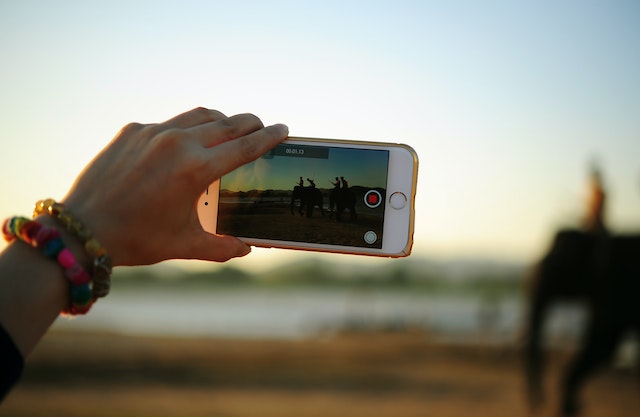The average person has an eight second attention span, according to a 2015 Microsoft study. It’s short, but can you blame us? With so many spangly visuals constantly competing for our attention, it’s hard to focus on anything for an extended period of time. And while you can make all the complaints you want about the declining patience of society, this lack of attention span is something you’ll want to take seriously if you’re trying to promote your business.
The problem is that when many marketers create videos to share on social media, they seem to forget that most people simply don’t have the time or the desire to watch lengthy content. These marketers spend hours to create and post videos that last several minutes and are packed with information and visuals, and with rare exception, no one watches until the very end. It’s understandable: we’re often under the impression that more is more, and that providing as much information as possible will help people make educated decisions. However, people get overwhelmed by so much information, and rather than try to understand it all, they simply stop watching. The takeaway here is that you’ve got to pare videos down and keep them short.
How short should your videos be? Believe it or not, it depends heavily on the social network to which you’re posting, since users have different expectations when it comes to how much time they’ll spend moving through each one. Here are ideal video lengths for popular social media channels.
Facebook: 30-60 seconds
According to a 2016 survey by Kinetic Social, 44% of Facebook videos between 30 and 60 seconds were watched all the way through. It may not sound like a lot, but it’s actually the highest percentage of viewership for all video lengths. Interestingly, just 26% of videos under 30 seconds were watched to completion, demonstrating that short is good, but too short isn’t. Go too long, though, and you run into the same issue: just 31% of videos longer than two minutes were watched all the way through. Bottom line? Half a minute to a minute on Facebook is best.
Twitter: about 45 seconds.
Twitter limits users to 140 seconds of video (presumably to match the 140 character limit for tweets), but for the social network that’s all about keeping things brief, that’s a lot of time. To ensure that more followers watch them from beginning to end, keep your Twitter videos under a minute.
Instagram: about 30 seconds
Even though Instagram is all about visuals, it’s best to keep videos brief if you want your followers to watch them. That’s because we process — and scroll past — images and videos significantly faster than we process text. In fact, according to a recent HubSpot survey, the average time of the Instagram videos that receive the most comments is 26 seconds. If you want the comments and engagement that result from viewership, keep your videos under half a minute.
Snapchat: 10 seconds (not entirely by choice)
Snapchat has always limited video clips to ten seconds, so going longer isn’t an option. Just this month, however, Snapchat started allowing users to record six ten-second videos consecutively — a minute in total — so you can post longer videos in multiple snaps. As for whether you should do this, it’s a feature that could lend itself to sequential narratives extremely well. With single snaps, use as many of the full ten seconds as you can, as it’s difficult to tell a viable story in less time. The new challenge, though, will be to make compelling stories with this new 60-second workaround, and to see if users watch them in their entirety.
YouTube: about 2 minutes
People go to YouTube specifically to watch videos, and it’s also an ideal place to upload videos that you embed on your business website. Users expect that YouTube videos won’t be a short and flashy as they ones they find on more scroll-based social networks, so you do have a little more wiggle room. Of course, the short attention span will kick in eventually, so you don’t want to make them too long. The same HubSpot survey cited above found that videos that lasted about two minutes got the most user engagement.
It’s About Focus
If you have a lot of footage and don’t know how to cut it down to one short video, you may want to step back and rethink your focus. Maybe instead of one video, for example, you can create two or three videos, with each one centered on a very specific topic. Think snippets rather than full-on documentary style; instead of posting a three-minute video on Tuesday, you can post 45-second videos on four consecutive days.
Ultimately, the durations mentioned here are a good starting off point. To fine tune the ideal length for your marketing efforts, you’ll want to look at your user engagement and feedback on the videos you post. That data will help you determine the best lengths for you.
